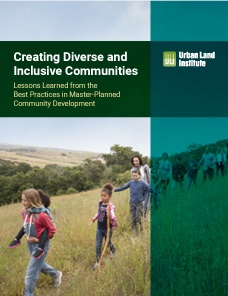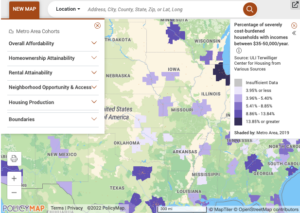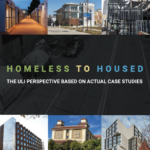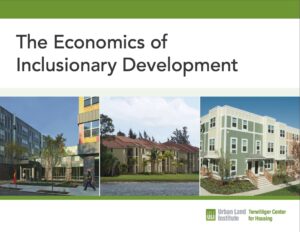Research & Publications
One of the key objectives of the ULI Terwilliger Center for Housing is to provide thought leadership on housing production and affordability. The Terwilliger Center Team periodically conducts research and releases publications on the trending topics and issues facing the industry.
In this section, explore our current and past research efforts as well as selected reports. The featured projects and reports below represent the range of housing issues address through the Center’s program of work.
Recent Research & Publications
2024
 Lucille and Bruce Terwilliger Place: A Creative Partnership in Arlington, Virginia, Yields Lessons for Affordable Housing Production
Lucille and Bruce Terwilliger Place: A Creative Partnership in Arlington, Virginia, Yields Lessons for Affordable Housing Production
This case study showcases an innovative partnership between the Arlington Partnership for Affordable Housing (APAH) and the American Legion Post 139, which resulted in a new 160-unit affordable housing project with a veteran preference built on the site of the aging post facilities. This case study provides important lessons for affordable housing development, including the impact of partnerships with land-rich nonprofits and the importance of flexible zoning and continued subsidies for deeply affordable housing.
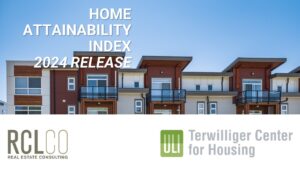 2024 Terwilliger Center Home Attainability Index: Report of Findings, Data Tools and Maps
2024 Terwilliger Center Home Attainability Index: Report of Findings, Data Tools and Maps
The Terwilliger Center Home Attainability Index is a data-rich resource for understanding the extent to which a housing market is providing a range of choices attainable to the regional workforce. The data can help identify gaps in home attainability and provide better context to understand residential markets; explicitly identify and highlight racial, socioeconomic, and intraregional disparities and inequities; and enable national and regional comparisons to inform housing production, policy, and financing decisions.
2023
Creating Diverse and Inclusive Communities: Lessons Learned from the Best Practices in Master-Planned Community Development
This report aims to inspire the real estate industry by showcasing the best practices in MPC development for creating diverse and inclusive communities. An in-depth study of the nation’s most successful MPCs reveals that many developers of industry-leading communities are embracing diversity as a core value. Seven key principles that can set a community on a trajectory to become more diverse and inclusive are identified and elaborated with concrete evidence from the studied communities.
2022
Terwilliger Home Attainability Index
The Terwilliger Center Home Attainability Index is a data-rich resource for understanding the extent to which a housing market is providing a range of choices attainable to the regional workforce. In addition to the Summary Report, the 2022 Index includes:
an Interactive Map (hosted by PolicyMap) and Data Tool.
Additional resources are available to both members and nonmembers on ULI’s Knowledge Finder. Watch the Index Release webinar recording with practitioner perspectives here.
Previous Data Tools and Reports: 2021 and 2020
___________________________________________________________________________________________________
Homeless to Housed: The ULI Perspective Based on Actual Case Studies
This report provides case studies that showcase how the development community can be an active partner in developing housing and programmatic spaces that support people experiencing homelessness, a summary of lessons learned, and a blueprint for how to replicate best practices in U.S.
2021
Stable Res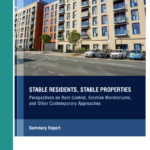 idents, Stable Properties: Perspectives on Rent Control, Eviction Moratoriums, and Other Contemporary Approaches
idents, Stable Properties: Perspectives on Rent Control, Eviction Moratoriums, and Other Contemporary Approaches
ULI Terwilliger Center for Housing conducted an applied policy research project that engages with a wide range of practitioners representing both the tenant and real estate industry perspectives to define a vision for the tenant-landlord relationship in a post-pandemic world.
Equitable Investment in Infrastructur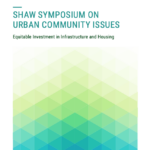 e and Housing
e and Housing
The Shaw Symposium is an annual forum endowed by former ULI chairman Charles “Charlie” H. Shaw that brings together a selection of leading national experts and practitioners to address the challenges and opportunities of urban neighborhoods. The 2021 virtual event focused on the nexus of infrastructure, housing, and equity, and this report captures attendees’ high-level recommendations and a framework to assist local communities in designing and implementing infrastructure investments.
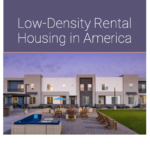 Low-Density Rental Housing in America
Low-Density Rental Housing in America
Building off the Terwilliger Center’s Family Renter Housing and Attainable Housing reports, this partnership with RCLCO focuses on strategies and models for building purpose built single-family or townhome – low- and mid-density rentals (SFR). There is an emerging and still undefined spectrum of innovative housing that serves a product want and need between garden apartments and traditional single-family homes.
Previous Work
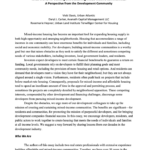 What Works for Building and Sustaining Mixed-Income Communities: A Perspective from the Development Community
What Works for Building and Sustaining Mixed-Income Communities: A Perspective from the Development Community
In this essay, Victoria Davis, managing partner with Urban Atlantic, and Daryl Carter, chairman and CEO of Avanath Capital Management, offer their tools and strategies for navigating the complex financial, regulatory, and community building aspects of building and managing mixed-income properties.
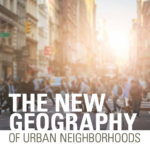 The New Geography of Urban Neighborhoods
The New Geography of Urban Neighborhoods
This report, prepared by RCLCO, finds that population growth rates in urban neighborhoods of the nation’s 50 largest metropolitan statistical areas (MSAs), are approaching suburban growth rates for the first time in decades. The report explores how this growth has accompanied the evolution of different types of urban neighborhoods, and how demographic and economic trends have shaped development in these areas.
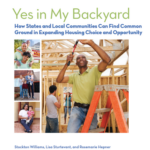 Yes in My Backyard: How States and Local Communities Can Find Common Ground in Expanding Housing Choice and Opportunity
Yes in My Backyard: How States and Local Communities Can Find Common Ground in Expanding Housing Choice and Opportunity
The Yes in My Backyard report shows how state and local governments can create more of the housing options communities increasingly need through smarter local land use policies and incentives. It provides ULI members and other real estate leaders with actionable advice on how states and cities can create a better policy environment for housing development, with real examples from states around the country.
The Economics of Inclusionary Development
Inclusionary Zoning (IZ) policies aim to generate a below-market housing—workforce housing units—that the private market on its own would not produce at a given location. The study’s purpose is to enable policy makers to better understand how an IZ policy affects real estate development and how to use the necessary development incentives for IZ to be most effective.
